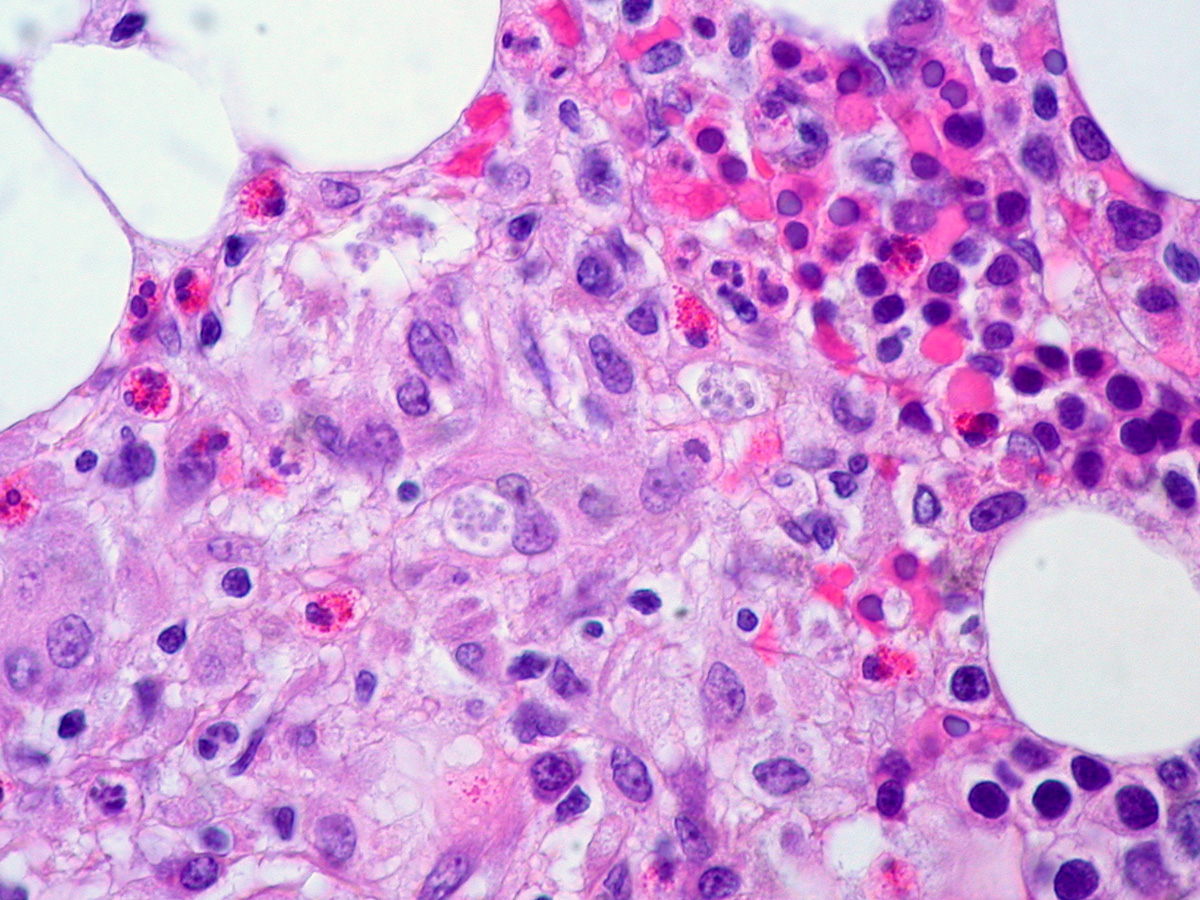
Acute osteomyelitis is an infection of bones that predominantly affects children. Infective agents, i.e. bacteria, are often seeded Hematogenously (via blood) and they originate from other organs in the body, eventually reach the bone and cause its infection. Osteomyelitis usually affects metaphysis of long bones.
Bacteria that are commonly responsible for osteomyelitis include Staphylococcus aureus, Streptococcus pyogenes, Hemophilus influenzae and Gram-negative organisms. Osteomyelitis caused by Sallmonela usually affects children suffering from sickle cell anemia.
Acute inflammation of the affected bone develops as a consequence of bacterial infection. There is an increased intraosseous pressure and intravascular thrombosis. Suppuration leads to abscess that may drain into the surrounding soft tissues. In case the infection spreads to epiphysis of the affected bone this may eventually result in joint infection. In case of proper treatment and control over the process of infection the condition resolves completely. On the other hand, acute osteomyelitis may progress into a chronic form of the disease.
Clinical Characteristics of Acute Osteomyelitis
The person suffering from acute osteomyelitis complains about the pain (he/she is able to localize the pain). Malaise and fever are additional signs. The bone is tender to touch and in order to avoid even more intensive pain the patient reduces joint movement. Once the infection has fully developed and in case the abscess of the bone has drained into the soft tissues the painful area becomes swollen.
Diagnosing Acute Osteomyelitis
X-ray of the affected bone does not show any sign of infection within 3-5 days after the onset of the infection. In the second week there are characteristic X-ray signs that can help in diagnosing osteomyelitis. They include periosteal new bone formation and patchy rarefaction of metaphysis as well as metaphyseal bone destruction. Additional help is obtained from bone scanning particularly if the doctor suspects some other conditions. Definite diagnosis can be confirmed by aspiration of pus from the abscess or discharging sinus.
Treatment for Acute Osteomyelitis
General measures in patients suffering from osteoarthritis include administration of intravenous fluids and proper treatment for pain. The affected and painful extremity may require a splint or skin traction. The cornerstone of the treatment includes antibiotics. The treatment with antibiotics must be aggressive and eradicate all infective microorganisms. In case symptoms and signs of the infection linger in spite of conservative therapy, patients are treated surgically. For example, a subperiostal abscess is drained and in some cases surgeons perform drilling of metaphysis.
Some patients develop complications such as metastatic infection (spread of the infection to the brain, lungs etc.), septic arthritis (spread of the infection to joints) and chronic osteomyelitis.









-and-Multiple-Sclerosis-Differences-And-Similarities_f_280x120.jpg)







Your thoughts on this
Loading...